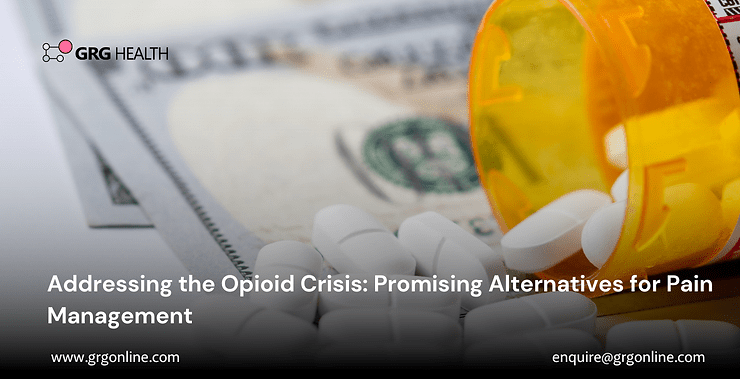
The opioid crisis has become a public health emergency, affecting millions of lives across the globe. Over-reliance on opioid medications for pain management has led to a surge in addiction, overdose, and deaths. As the medical community and policymakers seek to address this crisis, the search for effective, non-opioid alternatives for pain management has gained momentum. This article explores some of the most promising alternatives to opioids, offering hope for safer and more sustainable pain management solutions.
The Opioid Crisis: A Global Health Challenge
The opioid crisis is characterized by the widespread misuse of prescription opioids, leading to addiction, overdose, and a staggering number of deaths. In the United States alone, the Centers for Disease Control and Prevention (CDC) reported over 93,000 drug overdose deaths in 2020, with opioids involved in the majority of these cases. This alarming trend has prompted healthcare providers to reconsider pain management strategies, focusing on alternatives that do not carry the same risks as opioids.
Non-Opioid Medications: A Safer Approach
One of the most significant shifts in pain management is the increased use of non-opioid medications. These alternatives are often equally effective in managing pain without the addictive potential of opioids.
- Nonsteroidal Anti-Inflammatory Drugs (NSAIDs): Medications such as ibuprofen and naproxen are widely used to manage mild to moderate pain, particularly for conditions like arthritis and musculoskeletal injuries. NSAIDs work by reducing inflammation, which is often the source of pain, making them a first-line treatment for many patients.
- Acetaminophen: Commonly known as Tylenol, acetaminophen is another widely used non-opioid pain reliever. It is effective for treating a variety of pain conditions, including headaches, osteoarthritis, and back pain. Acetaminophen is often recommended for patients who cannot tolerate NSAIDs due to gastrointestinal side effects.
- Antidepressants and Anticonvulsants: Certain antidepressants, such as amitriptyline and duloxetine, as well as anticonvulsants like gabapentin, have been shown to be effective in managing chronic pain conditions, particularly neuropathic pain. These medications work by altering the way the brain processes pain signals, providing relief for patients with conditions like fibromyalgia and diabetic neuropathy.
Physical Therapy and Exercise: Movement as Medicine
Physical therapy and regular exercise are increasingly recognized as essential components of a comprehensive pain management plan. These non-pharmacological approaches can help reduce pain, improve function, and enhance the overall quality of life.
- Physical Therapy: Tailored physical therapy programs can address specific pain conditions, such as back pain, joint pain, and post-surgical pain. Techniques such as manual therapy, ultrasound, and electrical stimulation can help reduce pain and promote healing.
- Exercise: Regular physical activity is beneficial for managing chronic pain, particularly in conditions like arthritis and low back pain. Exercise helps strengthen muscles, improve flexibility, and reduce inflammation, all of which contribute to pain relief. Low-impact activities such as swimming, yoga, and walking are often recommended for individuals with chronic pain.
Mind-Body Techniques: The Power of the Mind in Pain Management
Mind-body techniques are gaining popularity as effective tools for managing pain without medication. These approaches focus on the connection between the mind and body, helping patients manage pain through relaxation and mental focus.
- Mindfulness Meditation: Mindfulness meditation involves paying attention to the present moment without judgment. Studies have shown that mindfulness can help reduce chronic pain by changing the way the brain perceives pain signals. Patients who practice mindfulness meditation often report lower pain levels and improved coping mechanisms.
- Cognitive Behavioral Therapy (CBT): CBT is a type of psychotherapy that helps patients identify and change negative thought patterns that contribute to pain. CBT has been shown to be effective in managing chronic pain conditions, including fibromyalgia and chronic low back pain. It empowers patients to develop healthier responses to pain and improve their overall well-being.
Interventional Pain Management: Targeted Relief
Interventional pain management techniques offer targeted pain relief for patients with specific conditions. These minimally invasive procedures can provide significant pain relief without the need for opioids.
- Nerve Blocks: Nerve blocks involve the injection of anesthetic agents near specific nerves to block pain signals. This technique is often used for conditions like sciatica, complex regional pain syndrome, and post-surgical pain.
- Radiofrequency Ablation (RFA): RFA uses heat generated by radio waves to target and destroy nerve fibers that carry pain signals. This procedure is commonly used to treat chronic pain conditions such as arthritis and facet joint pain.
Complementary Therapies: Integrative Approaches to Pain Management
Complementary therapies, often used alongside conventional treatments, offer additional options for managing pain without opioids.
- Acupuncture: Acupuncture, an ancient Chinese practice, involves the insertion of thin needles into specific points on the body. It has been shown to be effective in reducing pain for various conditions, including migraines, osteoarthritis, and chronic pain.
- Chiropractic Care: Chiropractic care focuses on the diagnosis and treatment of musculoskeletal disorders, particularly those involving the spine. Chiropractic adjustments can provide relief for patients with back pain, neck pain, and headaches.
Conclusion
The opioid crisis has highlighted the urgent need for safer, more effective pain management strategies. By exploring non-opioid medications, physical therapy, mind-body techniques, interventional pain management, and complementary therapies, healthcare providers can offer patients a comprehensive and holistic approach to pain management. These alternatives not only reduce the risk of opioid dependence but also empower patients to take control of their pain and improve their overall quality of life.
By embracing these promising alternatives, we can make significant strides in addressing the opioid crisis and paving the way for a healthier future.







